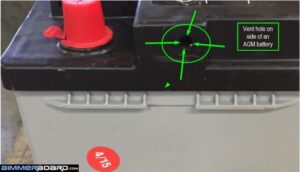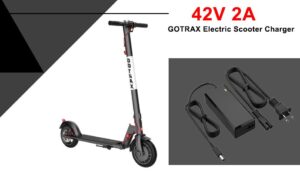Wondering how often you should charge your sealed lead acid battery? It’s a common question that many battery owners grapple with. The good news is, finding the ideal charging frequency is not as daunting as it may seem. In this article, we will delve into the world of sealed lead acid batteries and provide you with practical insights on how to optimize their performance. So, if you’ve ever wondered, “How often should I charge my sealed lead acid battery?”—read on to uncover the answer along with some valuable tips and guidelines.
How Often Should I Charge My Sealed Lead Acid Battery?
When it comes to maintaining and optimizing the performance of an essential component like a sealed lead acid (SLA) battery, understanding how often to charge it is crucial. Proper charging not only extends the battery’s lifespan but also ensures uninterrupted power supply. In this article, we will explore the factors that influence charging frequency and provide practical tips to help you determine the ideal charging schedule for your SLA battery.
Understanding Sealed Lead Acid Batteries
Before delving into the specifics of charging, let’s briefly discuss what sealed lead acid batteries are. SLA batteries are a type of rechargeable battery widely used in various applications, including UPS (uninterruptible power supply) systems, emergency lighting, alarm systems, electric vehicles, and solar power storage. They are known for their reliability, versatility, and cost-effectiveness.
SLA batteries consist of lead plates immersed in an electrolyte. Unlike their unsealed counterparts, SLA batteries are sealed, preventing the electrolyte from leaking during normal operation. This design makes them maintenance-free and generally safer to use. However, appropriate charging practices are still crucial to ensure optimal performance and longevity.
Factors Affecting Charging Frequency
The ideal charging frequency for your SLA battery depends on several factors. Understanding these factors will help you determine how often you should charge your battery:
- Battery Usage: The frequency of use plays a significant role in determining the charging schedule. Regular daily usage may require more frequent charging than occasional or seasonal use. Assessing your usage patterns will help you establish a baseline for charging frequency.
- Battery Capacity: The capacity of an SLA battery is typically measured in ampere-hours (Ah). Higher-capacity batteries generally have a longer runtime and may require less frequent charging. If you have a lower-capacity battery, you may need to charge it more often.
- Load on the Battery: The power demand or load on the battery affects the rate at which it discharges. If the load is higher, the battery will deplete faster and require more frequent charging. Consider the devices or systems connected to the battery and their power requirements.
- Self-Discharge Rate: SLA batteries have a self-discharge rate, which means they slowly lose charge when not in use. Higher-quality batteries often have lower self-discharge rates, allowing them to maintain charge for longer periods. Monitoring the self-discharge rate will help you determine how often you need to charge the battery to compensate for this loss.
Determining the Ideal Charging Schedule
Now that you understand the factors affecting charging frequency, it’s time to determine the ideal charging schedule for your SLA battery. Here are some practical tips to help you establish an effective routine:
1. Refer to the Manufacturer’s Guidelines
Every SLA battery model comes with manufacturer guidelines outlining the recommended charging practices. These guidelines are specific to the battery’s design and chemistry, providing valuable insights into the optimal charging schedule. Refer to the user manual or the manufacturer’s website for detailed information.
2. Consider the Battery’s Depth of Discharge
The depth of discharge (DoD) refers to the percentage of the battery’s capacity that has been used. Charging frequency often depends on the battery’s DoD. It is generally advisable to recharge your SLA battery before the DoD exceeds 50%. Regularly discharging the battery to lower levels before recharging can negatively impact its lifespan.
3. Use a Smart Charger
Investing in a smart charger can greatly simplify the charging process and optimize battery performance. Smart chargers are designed to monitor and adjust the charging process based on the battery’s needs. They typically offer features like temperature compensation, voltage regulation, and various charging modes. Using a smart charger can help determine the ideal charging frequency for your SLA battery and prevent overcharging or undercharging.
4. Implement Routine Maintenance
Performing regular maintenance on your SLA battery is essential for maximizing its efficiency and lifespan. Cleaning the battery terminals, ensuring proper ventilation, and inspecting for any signs of damage or corrosion should be part of your routine. By keeping the battery in good condition, you minimize the risk of unforeseen issues that may affect its charging needs.
5. Monitor Battery Performance
Taking note of your battery’s performance over time will provide valuable insights into its charging requirements. Keep track of factors such as runtime, voltage levels, and overall capacity. If you notice significant changes in these parameters, it may indicate the need for adjustments in your charging schedule.
6. Consider External Factors
Various external factors can impact the charging frequency of your SLA battery. Temperature, for example, affects battery performance and may require adjustments in the charging schedule. Extreme temperatures, both high and low, can negatively impact the battery’s lifespan. Additionally, if the battery is subjected to high vibration or mechanical stress, it may need more frequent charging to compensate for the strain.
7. Seek Professional Advice
If you are unsure about the optimal charging schedule for your specific SLA battery application, it is always advisable to seek professional advice. Battery experts or technicians can assess your requirements, evaluate the battery’s condition, and provide personalized recommendations to ensure its longevity and performance.
Determining how often to charge your sealed lead acid battery is a crucial aspect of its maintenance and performance. By considering factors such as battery usage, capacity, load, self-discharge rate, and following the manufacturer’s guidelines, you can establish an effective charging schedule. Using a smart charger, implementing routine maintenance, monitoring battery performance, and accounting for external factors will further optimize your battery’s lifespan and reliability. Remember, a well-maintained battery not only provides continuous power but also saves you time and money in the long run.
Frequently Asked Questions
How often should I charge my sealed lead acid battery?
It is recommended to charge your sealed lead acid battery at regular intervals to ensure optimal performance and longevity. The frequency of charging depends on various factors, including the battery’s usage, temperature, and storage conditions. Here are some common questions regarding the charging frequency:
1. How often should I charge a sealed lead acid battery when it is in regular use?
When using a sealed lead acid battery regularly, it is advisable to recharge it once it reaches 50% to 70% of its charge capacity. Frequent charging is recommended to prevent over-discharging, which can negatively impact the battery’s health.
2. Should I charge my sealed lead acid battery after each use?
While it is not necessary to charge your battery after every single use, it is a good practice to recharge it if the battery has been significantly discharged. This helps to ensure the battery remains in good condition and ready for future use.
3. How often should I charge a sealed lead acid battery that is used infrequently?
If the battery is used infrequently or kept as a backup power source, it is recommended to charge it every three to six months, depending on the battery’s self-discharge rate. Regular charging prevents sulfation and maintains the overall health of the battery.
4. Should I leave my sealed lead acid battery plugged in for an extended period of time?
It is generally not recommended to leave your sealed lead acid battery connected to the charger for extended periods, especially after it is fully charged. Overcharging can lead to increased water loss and reduced battery lifespan. Disconnect the charger once the battery is fully charged.
5. Can I overcharge my sealed lead acid battery by charging it too frequently?
While frequent charging is beneficial, overcharging should be avoided. Most modern chargers are designed to prevent overcharging by automatically switching to a maintenance or float mode once the battery reaches full charge. However, it is advisable to use a charger specifically designed for sealed lead acid batteries and follow the manufacturer’s recommendations.
6. What should I consider when deciding the charging frequency for my sealed lead acid battery?
Several factors should be taken into account when determining the charging frequency, such as the battery’s capacity, expected usage, temperature conditions, and manufacturer’s guidelines. It is essential to read the battery’s documentation and follow the recommended charging practices to ensure its longevity and optimal performance.
Final Thoughts
In conclusion, the frequency of charging your sealed lead acid battery depends on several factors such as usage, temperature, and the battery’s discharge rate. Generally, it is recommended to charge the battery before it reaches 50% capacity to prolong its lifespan. For daily use, charging it once a week should be sufficient. However, if your battery is subject to heavy usage or extreme temperatures, you may need to charge it more frequently. Remember to follow the manufacturer’s guidelines and consider investing in a smart charger to ensure optimal charging and prolong the battery’s life. So, “How often should I charge my sealed lead acid battery?” – it’s essential to find the right balance based on your specific needs and usage patterns.


